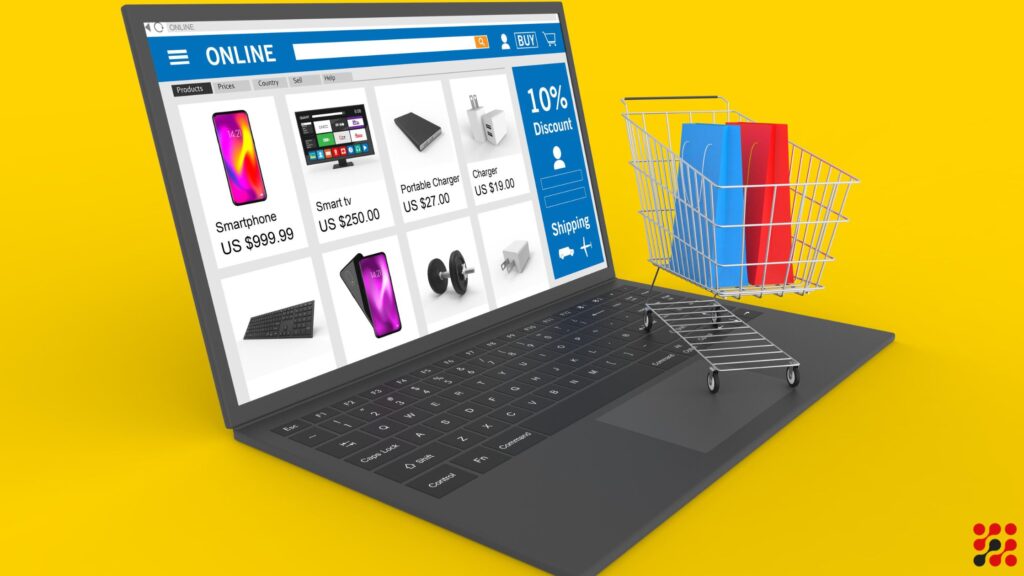In this guide, We will explore the different inventory management software cost for Startups, SMEs and Enterprise.
From understanding pricing factors to finding budget-friendly options, this is your go-to source for navigating inventory software cost.
How Much Does Inventory Management Software Cost – BallPark Figure
According to our analysis of over 100+ brands listed on Capterra and Trustradius, the average cost per user license per month is approximately USD$175.
In addition to user license fees, there are other expenses to consider when investing in an inventory management system.
Customer support fees, for instance, are often billed separately and typically amount to around USD$100 per month for a support package.
Furthermore, there are one-time setup costs associated with implementing an inventory management system.
These costs can vary significantly depending on the complexity of your requirements.
For instance, basic customer onboarding may cost around USD$800, while more custom API development consultancy fees for custom software setups can range from USD$10,000 to USD$40,000.
By understanding these various cost of inventory management software, you can make informed decisions about implementing an inventory management system that meets your business needs while staying within your budget.
Inventory Management Software Cost Ranges
Inventory management software price can vary widely depending on the factors we will discuss later on. To provide a comprehensive overview, let’s break down the price ranges you can expect:
Low Cost Inventory Management Software
Prices range from $20 to $100 per month for small businesses. Some providers offer freemium plans with limited features.
For small businesses or startups operating on a tight budget, low-cost inventory management software options are a viable choice.
These solutions typically offer basic functionality such as inventory tracking, order management, and reporting at an affordable price point.
Mid-Range Solutions
Expect to pay anywhere from $1000 to $5000 per month, depending on the size and complexity of your operations.
Enterprise-Level Solutions
Prices can soar into the $10,000 per month for large enterprises with extensive inventory management needs.
It’s important to note that these are rough estimates, and actual pricing may differ based on factors such as additional modules, implementation costs, and support services.
They are designed to handle large volumes of inventory across multiple locations and integrate with existing systems.
15 Factors That Influenced Inventory Management Software Cost
When considering the implementation of an inventory management system, it’s crucial to factor in a multitude of cost factors. Here are 15 key factors to consider
Need for Accounting Add-On
Assess whether your business requires an accounting add-on for integration between inventory management and financial systems, which may incur additional inventory software cost.
On-Demand/Pay To Use
Determine if there are optional modules not included in the base software package that may enhance functionality but come at an extra inventory management software price.
Number of Users/Subscribers
Consider the number of users who will require access to the system, as user licenses often come with associated fees.
Accepted Currency
Verify the currency in which you can pay for the software, as exchange rates and conversion fees may impact low cost inventory management software price.
High Volume of Orders
Evaluate the average volume of inventory your business handles, as some systems may charge extra for higher usage or additional API calls to other systems.
Number of Orders Received
Similarly, assess the average number of orders received, as this can affect pricing tiers or additional charges for transactional volume.
Reporting Requirements
Determine the level and sophistication of reporting capabilities needed to meet your business’s analytical needs, which may influence cost of inventory management software.
Cloud/API or Hardware Integrations
Identify any third-party integrations or hardware requirements necessary to boost up operations, noting any associated integration fees or compatibility considerations.
L1/L2/L3/L4 Customer Support
Evaluate the level of customer support required, including factors such as response times, availability, and support channels, which may impact inventory management software cost.
Data Migration & Cleanup
Factor in costs related to migrating existing data into the new system and cleaning up data inconsistencies or inaccuracies to ensure data integrity.
Customization
Assess whether customization is necessary to tailor the software to your business’s unique requirements, which may involve additional development or consulting fees.
Compliance Requirements
Take into account any regulatory or compliance requirements specific to your industry or region, ensuring the chosen software meets these standards without incurring penalties or fines.
Contract Lengths And Terms
Review the terms of service, contract length, and renewal conditions to understand the total cost of ownership over time and any potential penalties for early termination or scaling up/down.
Business Operations
Consider additional costs associated with preparing your business for software implementation, such as optimizing internal processes, providing training for staff accustomed to SaaS products, and configuring internal systems.
Scalability
Finally, consider the scalability of the chosen solution to accommodate future growth or changes in business needs, minimizing the need for costly system migrations or upgrades down the line.
How Much Effort Does It Take To Implement and Deploy?
According to our quick estimations for previous clients, the implementation timeline for inventory management software typically spans between 12 to 16 weeks.
During the implementation phase, it’s important to account for associated fees, which can vary significantly depending on the chosen approach for rollout assistance.
Here’s a breakdown of the options available:
Offshore Tech Partner
Larger enterprises or those with complex requirements may benefit from the services of an offshore tech partner.
This becomes especially pertinent when deploying multiple interlinked systems simultaneously.
Costs for offshore partners typically start around USD$85 per hour and can escalate based on the scope and duration of the project.
Reputable firms generally charge between USD$10,000 to USD$40,000 for a comprehensive 12-16 week rollout.
Vendor Onboarding
Many firms, particularly smaller and more agile companies, opt for onboarding directly with the vendor to keep costs down.
Vendor onboarding may lack flexibility, as it relies on predefined processes and packages that may not fully align with the unique needs of every business.
Additionally, reliance on the vendor’s resources and timelines may result in limited control over the implementation process.
Hybrid
A hybrid approach combines elements of different deployment methods, leveraging both internal and external resources to implement and deploy the inventory management software.
Managing a hybrid approach can be complex and requires effective coordination between internal teams, vendors, and third-party partners. Additionally, costs may vary depending on the extent of outsourcing and internal resource allocation.
Finding the Right Fit For Your Business
Finding the right inventory management software for your business can seem like an impossible task. Here are a few tips to help you navigate the selection process
Assess Your Needs
Identify your business’s specific inventory management challenges and prioritize the features that are essential for addressing them.
Research Thoroughly
Explore multiple vendors, read reviews, and request demos to get a firsthand look at the software’s capabilities.
Total Cost of Ownership
Look beyond the initial price tag and factor in additional costs such as implementation, training, and ongoing support.
Seek Scalability
Choose a solution that can grow with your business to avoid the hassle of switching systems down the line.
How Do I Get Started?
Here’s a comprehensive checklist to guide you through this initial phase:
You can schedule a free consultation with an inventory management expert.
To connect with a developer from TechnologyAlly, book a free consultation.
Additional Inventory Software Cost
Customer Support
Support costs for inventory management systems can vary and are often not included in the base package.
These costs may encompass customer service, technical assistance, cloud storage, and future upgrade expenses, all of which may incur separate charges.
Software Costs
Inventory management systems cover a broad spectrum of business functions.
However, they may not encompass all requirements, especially for SMEs.
Thus, additional software purchases may be necessary to complement the inventory management system.
Third Party Platforms
As you choose your inventory management system, it’s crucial to consider what other platforms or functions you’ll use with it – and how this affects your inventory management software price. For example:
How Much Does Inventory Management Software Cost – FAQs
What is a low cost inventory management software?
A low-cost inventory management software is a budget-friendly solution designed to meet the needs of small to medium-sized businesses. You can test any free trial SaaS vendor as well.
Which software to use for inventory management under $100
For inventory management under $100, consider options like Zoho Inventory, inFlow Inventory, or Stockpile.
Can inventory management software help reduce costs?
Yes, by optimizing inventory levels, reducing stockouts and overstock situations, and improving operational efficiency, inventory management software can contribute to cost savings.
Is inventory management software suitable for small businesses?
Yes! Many inventory management software providers offer solutions tailored to the needs and budget constraints of small businesses. Look for options with scalable pricing plans and features to get started.
How often should I review my inventory management software?
It’s advisable to conduct regular reviews of your inventory management software to ensure it continues to meet your evolving business needs.
Factors such as business growth, changes in market dynamics, and technological advancements.
Relevant Cost Guides
Low Cost Mobile App Development








